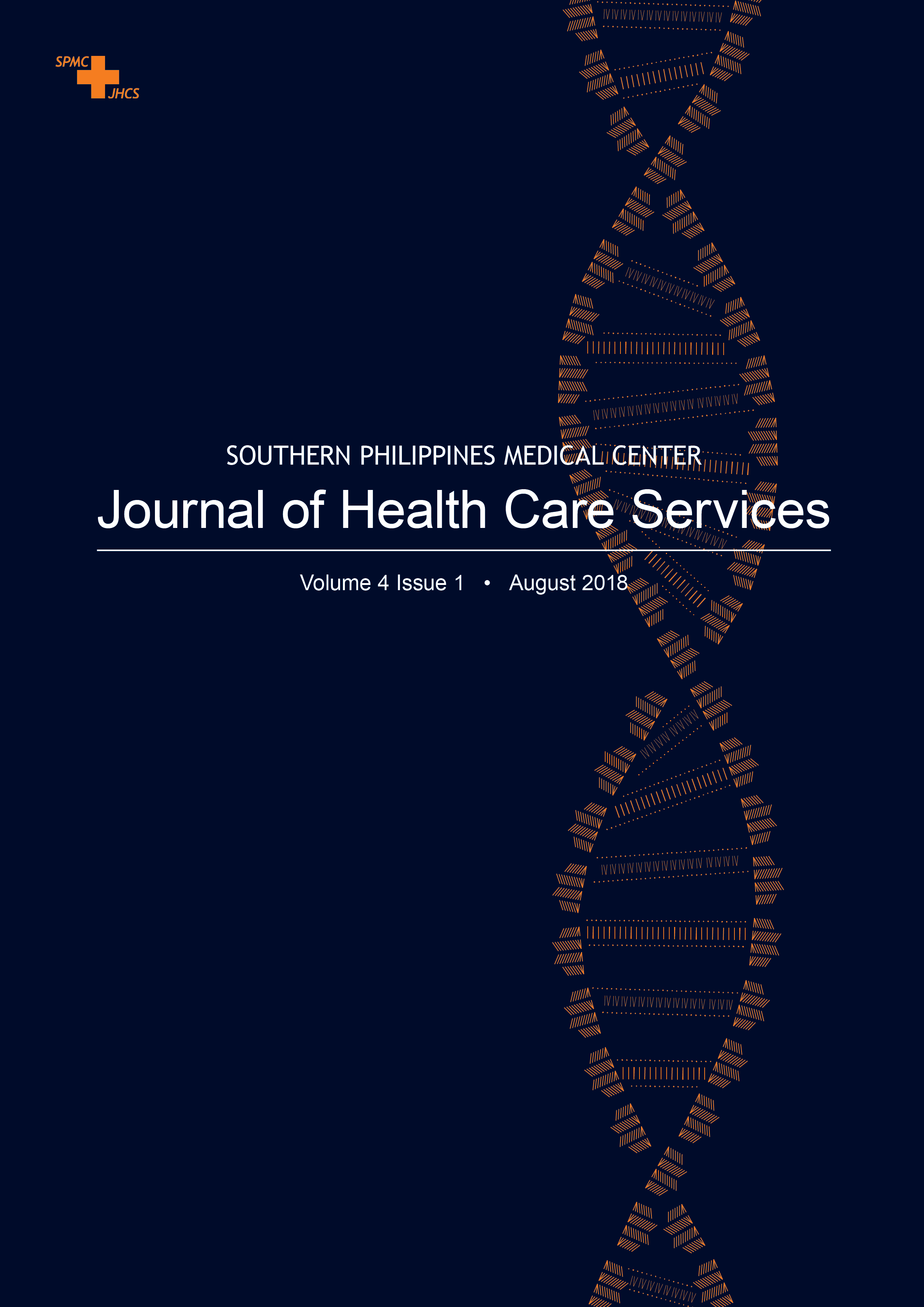Southern Philippines Medical Center Heart Institute surgical services from 2008 to 2017
SPMC J Health Care Serv. 2018;4(1):5 ARK: http://n2t.net/ark:/76951/jhcs48v9dd
1Infection Prevention and Control Unit, Department of Internal Medicine, Southern Philippines Medical Center, JP Laurel Ave, Davao City
2Hospital Research and Publication Office, Southern Philippines Medical Center, JP Laurel Ave, Davao City
Correspondence Mark Angelo Andrada, markandrada123@gmail.com
Article editor Yasmin M Avila
Received 29 June 2018
Accepted 13 August 2018
Cite as Andrada MA, Ladrero CX. Southern Philippines Medical Center Heart Institute surgical services from 2008 to 2017. SPMC J Health Care Serv. 2017;4(1):5. http://n2t.net/ark:/76951/jhcs48v9dd

Acknowledgments
We would like to thank Ms Rhialyn Dumaquita and Ms Lani Paler of the Southern Philippines Medical Center (SPMC) Hospital Information Management Department, Ms Encarnacion Tabanao and Dr Federico Fuente of the SPMC Billing Section, Ms Vanessa Saren of Segworks Technologies Corporation, Mr Shandy Mar Tabanao of SPMC Integrated Hospital Operations and Management Program, Ms Charity L Mata, nursing head of SPMC Operating Room, Ms Maria Victoria Javonillo, clinical coordinator of the SPMC Heart Institute (SPMC HI) Nursing Division, and Ms Arcelyn Justol, Mr Neill Stephen Nacua and Dr Mark Edward Anthony Maruya of SPMC HI for providing the data and information used in this report.
Article source
Commissioned
Peer review
Internal
Competing interests
None declared
Access and license
This is an Open Access article licensed under the Creative Commons Attribution-NonCommercial 4.0 International License, which allows others to share and adapt the work, provided that derivative works bear appropriate citation to this original work and are not used for commercial purposes. To view a copy of this license, visit http://creativecommons.org/licenses/by-nc/4.0/
References
1. Philippine Health Insurance Corporation. Governing Policies on PhilHealth Benefit Package for Case Type Z . PhilHealth Circular No. 029 s2012.
2. Philippine Health Insurance Corporation. Case Type Z Benefit Package for Acute Lymphocytic (Lymphoblastic) Leukemia (ALL), Breast Cancer, Prostate Cancer and Kidney Transplant. PhilHealth Circular No. 030 s2012.
3. Philippine Health Insurance Corporation. Z Benefit package rates for Coronary Artery Bypass Graft surgery, surgery for Tetralogy of Fallot, surgery for Ventricular Septal Defect and Cervical Cancer. PhilHealth Circular No. 002 s2013.
4. Philippine Health Insurance Corporation.The guiding principles of the Z Benefits. PhilHealth Circular No. 035 s2015.

This work is licensed under a Creative Commons Attribution-NonCommercial 4.0 International License.
Authors who publish with this journal agree to the following terms:
- Authors retain copyright and grant the journal right of first publication with the work simultaneously licensed under a Creative Commons Attribution-NonCommercial 4.0 International License that allows others to share the work for non-commercial purposes with an acknowledgement of the work's authorship and initial publication in this journal.
- Authors are able to enter into separate, additional, non-commercial contractual arrangements for the non-exclusive distribution of the journal's published version of the work (e.g., post it to an institutional repository or publish it in a book), with an acknowledgement of its initial publication in this journal.
- Authors grant the journal permission to rewrite, edit, modify, store and/or publish the submission in any medium or format a version or abstract forming part thereof, all associated supplemental materials, and subsequent errata, if necessary, in a publicly available publication or database.
- Authors warrant that the submission is original with the authors and does not infringe or transfer any copyright or violate any other right of any third parties.
